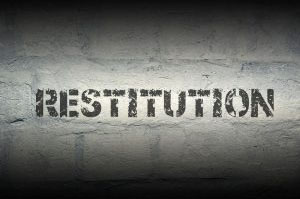Look before You Leap
What do you do when you follow all the procedural rules of law and it’s an administrative process that brings your case crashing down?
Hypothetically speaking, let’s say you are lawyer for the plaintiff in a breach of contract case against three defendants. You listen to the story of your client. You are convinced your client has a real likelihood of coming out successful in his claim. You file a writ of summons and a statement of claim against the three defendants. The first defendant is a company. The other two defendants are directors of that company. All the defendants enter appearance through the same lawyer. All the defendants physically show up in court from time to time when various motions are filed. To your absolute joy, the defendants never file a defence. You watch the days pass cautiously. Day fourteen passes and still no defence. You eagerly file your application for judgment in default of defence. You hope earnestly that the defendants don’t file a defence at the last moment. Days pass, no news from the defendant. Your motion for judgment in default of defence is moved and granted by the Judge. You file your entry of judgment with a bit too much glee and you begin your execution process. Someway, somehow you even succeed in auctioning off some of the defendants’ items at a public auction.
Suddenly everything comes to a halt. Before you know it, one of the directors of the company says he was never served with the writ and statement of claim. As if things couldn’t get any worse, he says he never instructed any lawyer to enter appearance on his behalf. He gets a new feisty lawyer who is so ready to put on his boxing gloves. This new lawyer wants the entire judgment you have obtained against his client set aside. He wants any sales made in the course of execution declared null and void. Your client is frantic. You are trying very hard not to look frantic. All this happens just when you were about to send your invoice to your client.
So what do you do? You do what any lawyer would do first. You file a search to determine if indeed that director was served. The search results confirm your worst fears. The director was indeed never served with the writ and statement of claim personally. You know it was the job of the bailiffs at the registry to ensure personal service of the writ and claim on the defendants. Can you put the blame on them and plead with the Judge that it was an administrative error so your client need not be prevented from enjoying the fruits of his judgment? Besides, that director was coming to court, so he cannot now claim that he was never personally served with the writ and statement of claim.
You even consider reporting the first lawyer who entered appearance on behalf of that director without his consent to the General Legal Council.
The day of the defendant’s motion to have your judgment set aside dreadfully comes. The new lawyer’s first punch is to rely on the Supreme Court case of Ghana Cable Company Limited c. Barclays Bank (Ghana) Limited [2010] SCGLR 108. The case simply states that once a party to an action is not personally served with a writ of summons and a statement of claim, there is indeed no service of the writ on that individual. Everything else you do after that is null and void with regards to that defendant.
You cringed inwardly because you have already read that case and know exactly what it says. You make attempts at distinguishing your case form the Barclays Bank case. You make reference to the High Court (Civil Procedure) Rules 2004 (C.I. 47) Order 7 rule 13. This rule provides that where a writ is not duly served on a defendant but the defendant files an unconditional appearance, the writ shall be deemed to have been duly served on the defendant and to have been served on the date on which the defendant filed the appearance. The Judge responds by saying exactly what you know he will say. The unconditional appearance was not filed by that particular director but by the former lawyer on behalf of all the other defendants. In other words, it was not filed by that particular defendant as the rule requires, but by his legal representative, hence the rule is inapplicable in this case. The rule clearly requires the defendant to enter an unconditional appearance, not his lawyer. Counsel also chips in the same point, now with more enthusiasm that that rule is in respect of a situation where the defendant himself enters appears not the lawyer for the defendant.
Just as you already knew, the defendant’s application is granted and the judgment is set aside. You smile broadly as if you won and say those dreaded words- “Much obliged, my Lord.”
When you recuperate and manage to reassure your client, there’s only one question you ask yourself – how do I prevent this from happening again in the future?
- Ensure that all defendants you sue are personally served with the writ and statement of claim;
- Conduct your search before filing any proceedings to ensure that the defendants have indeed been personally served with the writ and statement of claim;
- With group actions, have each client enter into separate terms of engagement with you to avoid situations where they claim that they never instructed you to act on their behalf;
- Keep reading your cases.



Great write up
The little things we ignore that come back to bite where it hurts most. Thanks
I like your writing style.
Great write up and an good read!